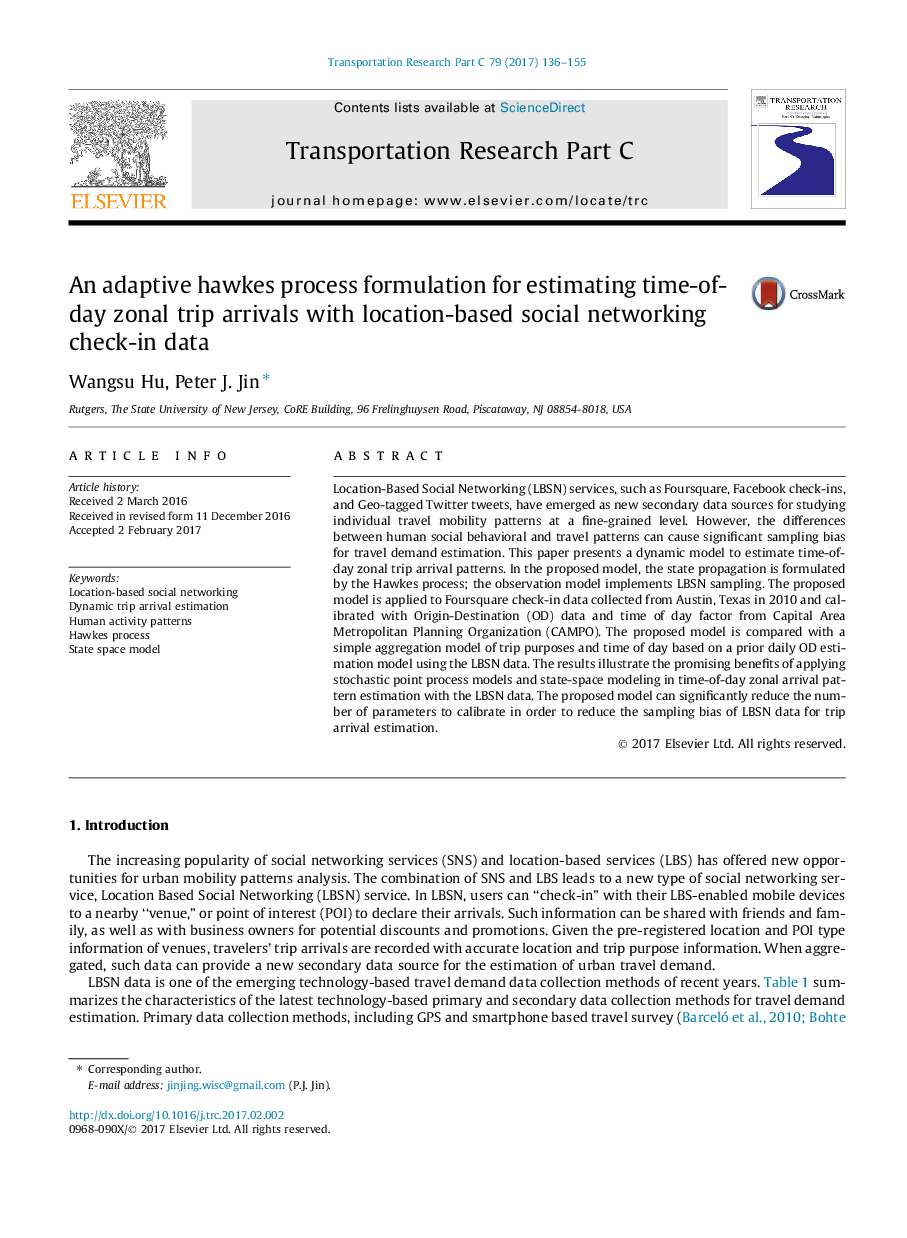ترجمه فارسی عنوان مقاله
فرمول سازمانی فرآیند سازگار با هوس برای برآورد زمان ورود روزانه منطقه ای با داده های ثبت نام شبکه های اجتماعی مبتنی بر مکان
عنوان انگلیسی
An adaptive hawkes process formulation for estimating time-of-day zonal trip arrivals with location-based social networking check-in data
| کد مقاله | سال انتشار | تعداد صفحات مقاله انگلیسی |
|---|---|---|
| 112908 | 2017 | 20 صفحه PDF |
منبع

Publisher : Elsevier - Science Direct (الزویر - ساینس دایرکت)
Journal : Transportation Research Part C: Emerging Technologies, Volume 79, June 2017, Pages 136-155
ترجمه کلمات کلیدی
شبکه اجتماعی مبتنی بر مکان، برآورد رسیدن سفر پویا، الگوهای فعالیت انسانی، فرآیند هاوکس، مدل فضایی دولتی،
کلمات کلیدی انگلیسی
Location-based social networking; Dynamic trip arrival estimation; Human activity patterns; Hawkes process; State space model;

